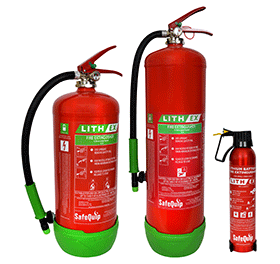

Fire is a powerful force of nature that can shape our world and bring it to its knees. According to SafeQuip, a distributor of fire-related equipment, understanding the different types of fires and how to combat them is essential for safety and protection.
What is fire and its elements?
Fire is a rapid chemical reaction between oxygen in the air and a fuel source, typically accompanied by the release of heat, light, and various gases. Fires are classified into different categories based on the type of fuel involved.
• Class A fires: These fires involve ordinary combustible materials such as wood, paper, cloth, and plastics.
• Class B fires: Class B fires are fuelled by flammable liquids or gases, including gasoline, oil, propane, and alcohol.
• Class C fires: Class C fires involve energised electrical equipment, such as wiring, appliances, and electrical panels.
• Class D fires: Class D fires consist of combustible metals like magnesium, sodium, and potassium.
• Class F fires: Class F fires are kitchen fires that involve cooking oils, fats, and greases.
• Lithium-ion battery fires: Currently, lithium-ion batteries do not have a separate fire class, but internationally, extensive research is being conducted to define such a category clearly due to the risk involved with such fires. When lithium-ion batteries are damaged or become unstable, they have the potential to overheat. This can result in a highly volatile fire that spreads rapidly (thermal runaway), has the tendency to re-ignite, and proves challenging to extinguish. Conventional fire extinguishers are ineffective in extinguishing lithium-ion battery fires.
Different types of fire extinguishers
Selecting the right extinguisher can make a significant difference in effectively controlling, suppressing, and extinguishing fires.
• Water fire extinguishers are effective for Class A fires. Water cools the flames and removes the heat element from the fire triangle.
• CO2 fire extinguishers are suitable for Class B and Class C fires. They work by displacing oxygen and cooling the fire.
• Powder fire extinguishers are effective for Class A, Class B, and Class C fires. They contain a dry chemical powder that smothers the fire by interrupting the combustion process.
• Foam fire extinguishers are ideal for Class A and Class B fires. They create a layer of foam that seals the surface, smothers the flames, and prevents re-ignition.
• Wet chemical fire extinguishers are designed for Class F fires. They use a special potassium-based solution to cool and suppress the fire while reacting with the fats to form a soap-like substance that seals the surface.
Lithex-Ex fire extinguishers
Lithex-Ex Fire Extinguishers contain AVD, an agent specifically designed for lithium-ion battery fires. AVD is made from the naturally occurring mineral vermiculite combined with water. It is a very effective agent that cools, encapsulates, prevents propagation, prevents re-ignition and extinguishes lithium-ion battery fires. The AVD is applied as a mist, and the water content knocks down the flames and cools adjacent cells. AVD forms a film over the cells as the water evaporates, isolating the fuel source, reducing thermal propagation and acting as an oxygen barrier.
For more information about SafeQuip, visit www.safequip.co.za
© Technews Publishing (Pty) Ltd. | All Rights Reserved.